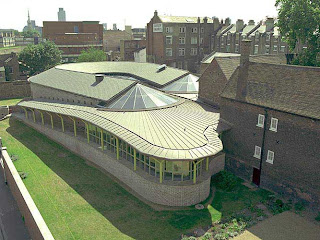Now that the fabulous exhibition The Look of Love has closed in at the Birmingham Museum of Art in the largest city in Alabama, I want to encourage a visit to see the permanent collections. You will find many fascinating objects and stories. The website is here.
Because I found the exhibition of Lover’s Eyes so exciting, I admit I skipped some of the Museum’s excellent collections of Asisan, African, Native American, and pre-Colombian art — which is really a shame. However, I lingered in the American and British galleries as long as I could.
In the American galleries, you will find outstanding works from many familiar artists and movements. One of my favorite groups is the Hudson River School, usually sweeping and dramatic views of the American landscape.
Portraits are always popular, especially those of heroes — and beautiful women.
Jane Stuart was the daughter of that renowned painter of early Americans such as George Washington, Gilbert Stuart (1755-1828). Jane assisted her father in his work and after his death carried on his portraiture and promoted his legacy.
I notice that many museums have trouble deciding whether to put the work of Thomas Sully and Benjamin West in the British or American galleries. It seems to depend upon which side of the Atlantic the institution rests.
“Cecilia Howard and Katherine Plowden arousing the prisoner Edward Griffiths from his slumber.”
| Erasistratus the Physician Discovers the Love of Antiochus for Stratonica, 1772 Benjamin West, b. U.S., d. Great Britain 1738-1820 |
Benjamin West was born in Pennsylvania and early in life showed artistic promise. He moved to London in 1863 and within a few years was named historical painter to George III. West served as second president of the Royal Academy of Art. The painting above is typical of the very popular style of large historical paintings in the third quarter of the 18th century. There are many fine portraits it he British Gallery by an array of excellent 18th and early 19th century artists.
The Birmingham Museum of Art has wonderful collections of Decorative Arts, below a scene in the British Gallery.
The chair, ca. 1775, originated in the workshop of Thomas Chippendale (1718-1779), mahogany, with modern upholstery.
Below, a selection of vases from various Wedgwood periods.
Obviously, I could go on for ages telling you about the glories of the museum. But I will leave that to you, as you investigate their very fine website. I close with a final piece, a charming cherub head that caught my eye.
























